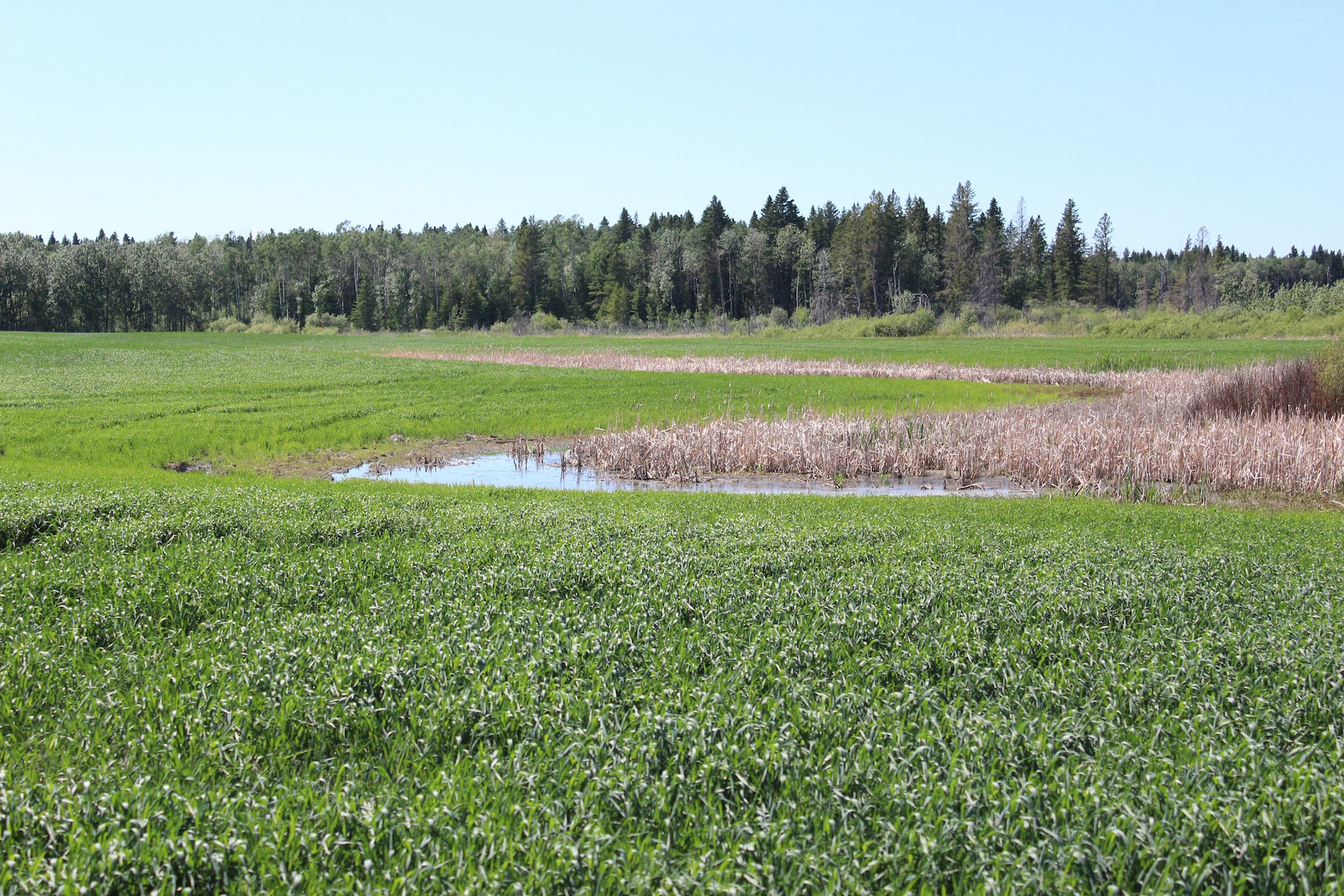News
May 30, 2022
Why make room for trees?
Let’s take stock of the environmental benefits wooded areas provide

Across Saskatchewan’s agricultural landscape, most forested areas come in the form of aspen bluffs, riparian areas, and planted shelterbelts bordering farm fields, providing what’s been described as the stitching that holds our patchwork quilt together.
And thank goodness for trees.
Within our towns and cities, trees increase our comfort in substantial ways. They reduce air pollution and provide air conditioning, erosion control, and wildlife shelter. In “Growing Greener Cities,” American Forestry Association researchers tallied the value of these services, compounded at five per cent interest for the 50-year life of a tree, at an astounding $57,151 USD. Per tree.
Within farmland, the value of wooded areas is no less remarkable, thanks to agri-environmental benefits like drought protection, carbon storage and climate change mitigation, as well as pollination and pest control services.
While the inconvenience and loss of production associated with farming around a bluff or shelterbelt are clear, evidence is mounting that the contribution of environmental benefits may tip the balance in favour of viewing wooded areas as less of an obstacle, and more of a resource to manage.
Particularly important during times of drought, tree bluffs and shelterbelts catch snow, protect crops from harsh summer sun, and slow down drying winds. Additional organic matter associated with these areas extends into the field, and the soils here exhibit better moisture absorption, nutrient cycling, soil organic carbon and earthworm activity.
And while there is a narrow zone in which trees compete with crops for water and nutrients, this effect is limited; the zone in which crops are bolstered by trees is significantly wider and the overall impact greater.
Like other natural land covers, trees in agricultural landscapes store carbon. Thanks to the process of photosynthesis, trees absorb CO2 from the atmosphere, and convert it into biomass such as trunks, stems and roots, squirreling it away for the lifetime of the tree. This simple act on the part of a tree improves our resilience to climate change. As researchers continue to explore how this carbon storage can be measured – and monetized through the creation of anticipated carbon markets – trees and other areas of natural cover will have even more discernible value to the landowner.
Tree cover also provides habitat for a menagerie of forest-associated wildlife species, including economically important ones like white-tailed deer. But some of the most compelling research around the value of wooded and other natural areas, involves the smaller, lesser-known species like insects and birds; and it turns out, these wee dynamos are shouldering a disproportionate workload in the form of pollination and pest control services.
Researchers from Agriculture and Agri-Food Canada, in collaboration with Royal Saskatchewan Museum and University of Calgary, have been investigating the ecological goods and services of non-crop areas – or field boundary habitats – in Saskatchewan’s agricultural lands. These important vestiges of habitat include not just wooded bluffs and shelterbelts, but also wetlands and even roadside ditches.
This team seeks to quantify the benefits and risks of these areas and how they affect crop yields. Preliminary findings are encouraging; field boundary habitats support healthy populations of beneficial insects, pollinators, birds and soil microbes.
In some study locations, the beneficial insect population was up to 20 times higher in field boundary habitats compared to open field sites. Wild bee numbers were also up. And bird populations were four times greater in natural hedgerows than in open fields. Given the critical agro-ecosystem roles these organisms perform, higher numbers mean good things for crop production.
Researchers hope to one day ascribe a dollar value of the services afforded by natural areas like tree bluffs and wetlands. Only then can we objectively determine the point at which the benefits of field boundaries outweigh lost crop production.
There’s another potential economic upside to maintaining natural areas like tree bluffs in Saskatchewan’s agricultural landscape: loss of biodiversity can hurt sustainability scores central to trade agreements. As we endeavour to grow our agricultural exports, supporting and maintaining habitats can help improve these scores, strengthen our position in global markets, and provide a direct benefit to Saskatchewan producers.
In addition to wetlands and grasslands, Ducks Unlimited Canada has conserved thousands of acres of natural lands through purchase projects and landowner agreements. We recognize the value of these vital areas as habitat, for the crop production benefits, and for their ability to build resilience on the landscape as climate change scenarios play out.
A popular online meme laments that, as a society, we’d be more likely to value and conserve trees if they each delivered a reliable Wi-Fi signal, rather than simply producing the oxygen we breathe. Indeed, we often don’t appear to place much value on a stable climate, clean air and water, and biodiversity that trees provide. Perhaps we need to start sending a little more appreciation their way.
